May 19, 2025
RWE is building a 98 MWAC solar project in Licking County, Ohio. Summit Ridge has confirmed a 4.1 MW solar installation in Rockingham County, Virginia. Equipment manufacturer Yanmar America installed solar energy to provide its headquarters in Adairsville, Georgia with power. Read all about these solar installations and more in this edition of Projects weekly.
Onsite construction is underway RWeThe second solar farm in Ohio. The company acquired the 98 MWAC Union Ridge Solar Project in Licking County, Ohio, from Leeward Renewable Energy (LRE) in the autumn of 2024.
RWE and construction partner Mastec Renewable energy sources are intended to use the strong traditional trade union staff from Ohio for the construction phase of the project. The companies work together with the Laborers’ International Union of North America, International Union of Operating Engineers and International Brother Hood or Electrical Workers Local Hallen in Licking County and in the entire state to rent in-skilled trade union workers, operators and electricians to build this solar scale.
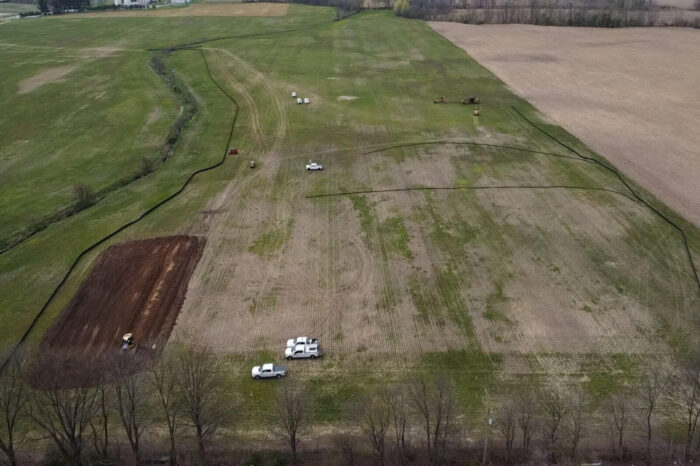

Cool factor: The investment of RWE in Union Ridge during the construction phase of the project will yield an estimated $ 68 million to new local economic activity for Licking County. This includes the direct employment of approximately 280 employees on site in peak construction and associated wages and benefits, as well as increased purchases of local goods and services and local sales tax payments. The project will also offer more than $ 35 million in tax revenues during its 40-year lifetime to support the Southwest Licking Local School District, Harrison Township and other jurisdictions in Licking County.
In addition, RWE will continue to build LRE’s postsecondary Education Center (C-TEC) with the career and technology education centers of Licking County (C-TEC) to build OHIO’s career and technology education centers by supporting a joint educational and career training program. The Solar Energy Training Course trains students in the assembly, the assembly and maintenance of solar panels that are used on solar facilities on utility scale in Ohio.
Summit Ridge ratifies 4.1 MW Scenic Farms Solar Installation in Virginia
Summit Ridge Energy (SRE) has turned the switch on his Scenic Farms Shared Solar Project, a 4.1 MW solar installation in Rockingham County, Virginia. The project is part of the extensive shared solar program of the state, which offers Dominion Energy Virginia Customers with wider access to credits for solar energy.
State officials, including deputy secretary of Commerce & Trade Maggie Beal and House of Delegates Majority Leader Charniel Herring, joined Summit Ridge Leadership, important investors and community partners to mark the official opening of the site.
“While Virginia has expanded its shared sun policy, we have had the opportunity to scale our efforts, now to have and exploit 100 MW of projects throughout the state,” said Steve Raeder, CEO of Summit Ridge. “We are committed to supplying locally generated power to Virginians while we continue our investment in the state.”
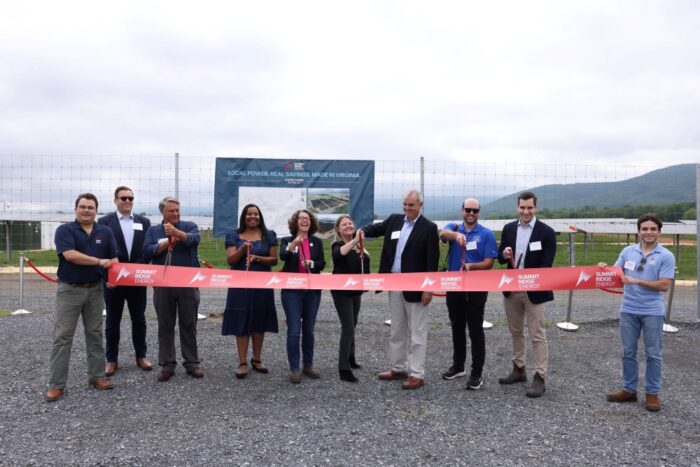

Cool factor: The construction and operation of this project and others in development represent the investment of $ 250 million of Summit Ridge in Virginia and offers more than 1,000 jobs for construction workers, suppliers and local companies. This investment is supported by the joint venture of Summit Ridge at Osaka Gas USA Corporation, with construction financing led by MUFG, a leading global financial group.
“It means a lot to know that this country continues to support our community, not only by producing food, but also by generating local energy,” said Leroy Heatwolle of Scenic L Farms, the landowner where the solar facility is located. “We are proud to still raise poultry and wheat here, while we also support the local education system and contribute to energy saving and economic growth. It is an honor to be part of something that returns and builds up a legacy for my children and grandchildren.”
Once operational, it is expected that the Scenic Farms site will only generate more than 6.5 million kWh annually, which means that meaningful energy savings are delivered to more than 600 local subscribers. The assets of Summit Ridge will once energetically reduce the energy costs for nearly 16,000 households in Virginia. Residential customers in the field of Dominion Energy Service can subscribe and take advantage of this project with invoice credits that start in the summer of 2025.
Baltimore Solar Project offers energy saving to LMI households
A $ 3.8 million, 808 kW community solar project on the roof in Baltimore, Maryland, saves residents considerable energy saving.
Earlier this year, the Climate access fund” Solar stewards” CohnreznickAnd extra partners “reversed the switch” to activate Solar4US @ Henderson-Hopkins. The project is owned and developed by the Climate Access Fund and is located at Elmer A. Henderson: a Johns Hopkins Partnership School, a public K-8 school in Baltimore City.
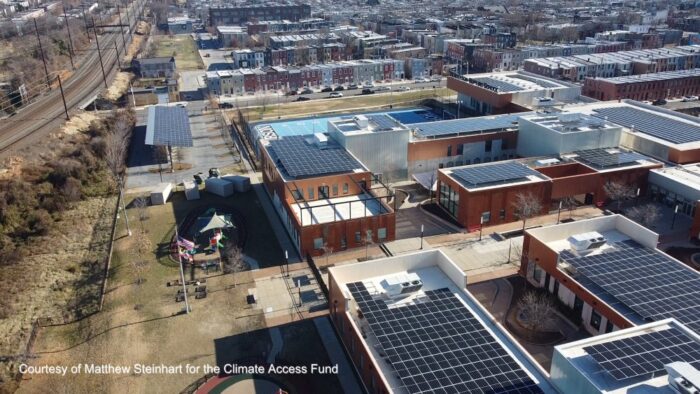

Cool factor: In addition to saving around 150 households with low to moderate incomes (LMI) (LMI), almost $ 1 million in energy costs for 35 years and offering work training opportunities, Solar4US @ Henderson-Hopkin’s practical ways in which companies can participate in the energy transition via social RECS.
Through a unique regulation that has been established by Solar Stewards in Atlanta, a job education and courses at the school are financed by professional services Cohnreznick’s purchase of Solar4us @ Henderson-Hopkins’ Renewable Energy Credits (RECS), the future community assignments of the Solar4us @ Henderson-Hopkins.
Yanmar America installs Solar on the roof to provide Georgia HQ with power
Yanmar America has taken an important step in the direction of the sustainability goals with the installation of 914 highly efficient solar panels at the head office in Adairsville, Georgia. From March 25, the Zonne -Array is fully operational, after successful tests by Georgia Power. This solar array will reduce the dependence on the facility of non-renewable power sources and reduce the CO2 footprint of the company in line with the Yanmar Green Challenge 2050 goals.
“This solar investment is our first step in the direction of reducing our CO2 footprint,” said Jeff Albright, president of Yanmar America. “Our dedication to the community and our employees is to be good stewards of the environment and leaders in achieving a zero cabbage fabric footprint.”
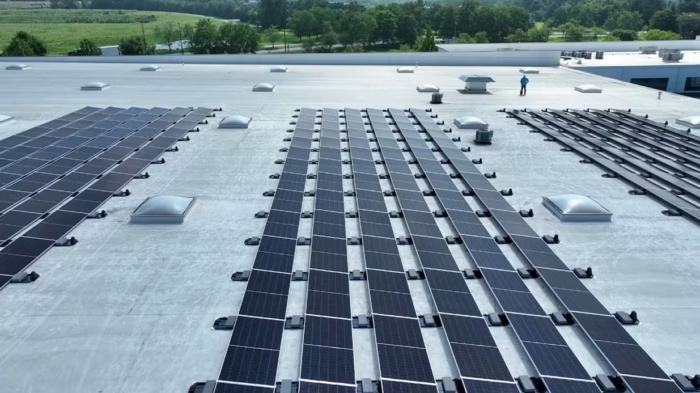

Cool factor: Sustainability has always been a cornerstone of Yanmar’s mission. For more than a century, the company has developed innovative technologies to maximize efficiency and minimize waste. This dedication extends beyond individual products and services to include Yanmar’s wider vision for a sustainable future. To become the challenges of becoming an ecological footprint-free, BKG-free company based on recycled resources, Yanmar de Green Challenge has launched 2050.
The installation of the solar panel in Adairsville is just an example of Yanmar’s wider dedication to renewable energy. Similar initiatives are underway at other Yanmar facilities worldwide, including Yanmar engine production India, Yanmar Compact Equipment Europe and Yanmar Europe, the European headquarters of the group. Each installation plays a crucial role in storming Yanmar’s activities and at the same time presents the scalability of solutions for renewable energy in industries and regions.
HVAC Solutions supplier Power North American HQ with solar energy
HVAC Solutions Provider Daikin has completed an almost 1 MW solar energy center on the North -American headquarters of the company near Waller, Texas.
“Daikin’s not -reinforcing dedication to innovation drives us to constantly perfect the air we share. With the launch of this solar project, we are one step closer to being a Netzero CO2 emission factory by 2030,” said Nathan Walker, Senior VP of Environmental Development, at Daikin Commergies Noord –.. “This installation is a significant step in reducing our carbon polish and unrest. Environmental management.”
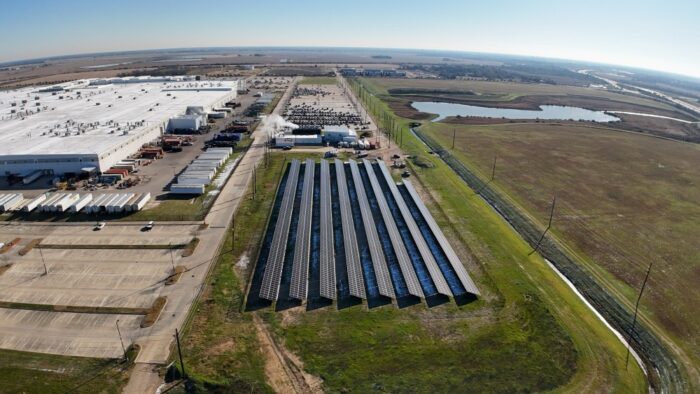

Cool factor: This installation at the Daikin Texas Technology Park (DTTP) has designed bifacial solar panels, to catch sunlight from both the front and rear with the help of direct and reflected environmental sunlight. The solar energy generated from the panels will immediately feed the central cooling machine from DTTP, which circulates around 125,000 liters of cooled water and 75,000 liters of hot water in the winter months, which serves as a backbone for the DTTP climate control. The solar structure is also designed for grid integration, so that Daikin can support the wider electricity grid if needed. These efforts support Daikin’s goal to reduce greenhouse gas emissions and to promote environmental responsibility by 2030.
“This milestone represents Daikin’s long-term obligation to achieve our sustainability goals and we will use the lessons and foundations of this investment to build a more energy-efficient and climate-conscious future in all Daikin activities.” said Kurt Heim, vice -president of environmental output at Daikin.
Colorado State to add 5.75 MWDC Virtual Net Measurement Solar Project
Colorado State University has signed a 20-year partnership with Turn energy To develop a new 5.75 MWDC virtual network measurement of solar energy project. This collaboration strengthens the role of Pivot as a partner of renewable energy for three large, leading Colorado universities, including the University of Colorado in Boulder and the University of Denver. The construction is expected to start next winter and will be completed in the fourth quarter of 2026.
“When this project is completed and starts with delivering renewable electricity, CSU will be 11 million kWh per year closer to us 100% renewable electricity goal, without net costs for university,” said Campus Energy Coordinator Stacey Baumgarn.
Cool factor: Through the partnership, Pivot Energy will build a solar project mounted on the ground in Weld County, Colorado. The electricity produced will be transferred directly to the Xcel Energy Electric Grid, which operates much from Colorado. All credits for renewable energy (RECs) will be transferred to CSU without increasing electricity costs, which represents a big step to achieve the sustainability goals of the university.
CSU benefits from a virtual network, an innovative program made possible by Colorado Senate Bill 21-261, which was adopted in 2021. The legislation enables organizations to take advantage of energy produced by offsite solar installations. According to the 20-year subscription agreement, CSU will use renewable electricity that is generated by the virtual networking sun project that will develop, build, possess and operate Pivot, without installing solar energy on site.
Tags: commercial and industrial, community sun

